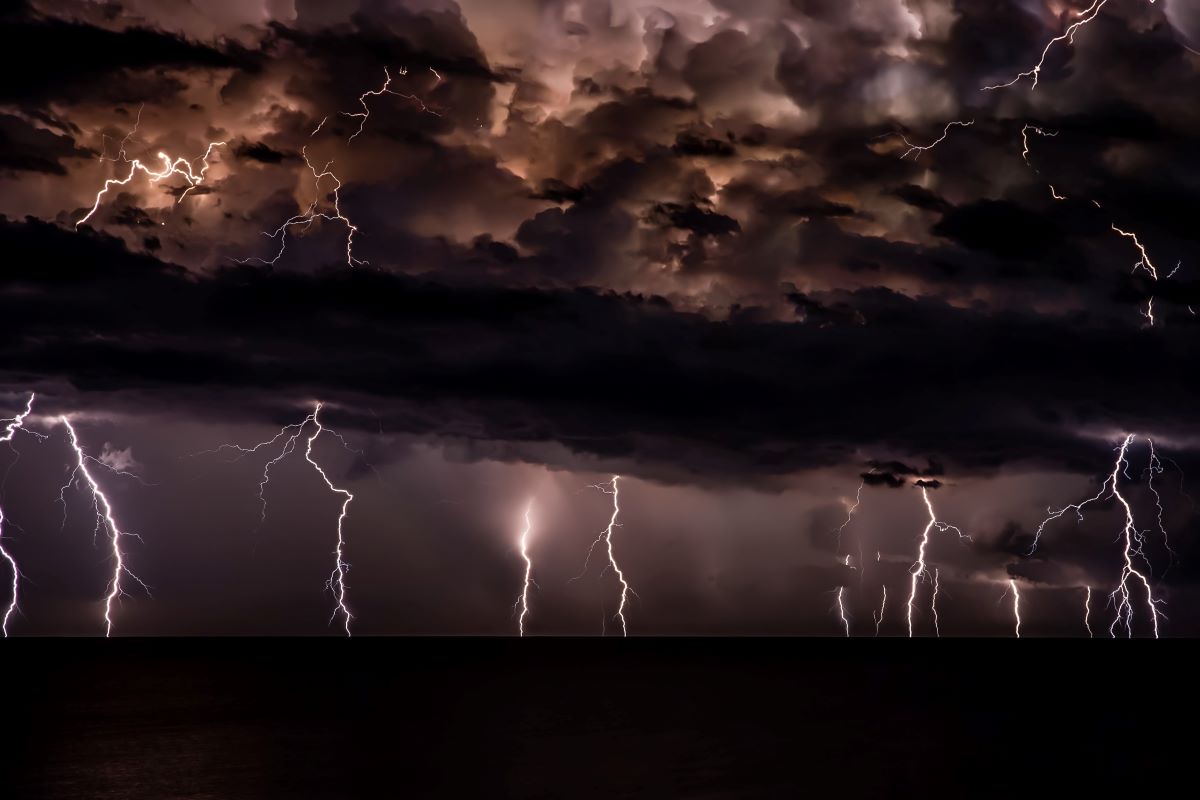During a calm between storms, officials from the California Office of Emergency Services (CalOES) and the state departments of Public Health, Social Services and Insurance gathered to discuss efforts to help Californians recover from the “atmospheric rivers” that have deluged the West Coast.
The Jan. 17 media briefing, “Staying Alert and Safe Through the Storms: It’s Not Too Late to Be Prepared,” was presented by CalOES and Listos California and co-hosted by Ethnic Media Services and California Black Media.
Diana Crofts-Pelayo of CalOES cited the federal government’s recent approval of “an expedited major disaster declaration” for three California counties — Merced, Sacramento and Santa Cruz — qualifying them for extra assistance beyond what those local governments can provide.
While Gov. Newsom’s administration continues to seek more such declarations for a total of 49 of the state’s 58 counties, California is already deploying numerous resources to counter the impacts of the winter storms that have taken at least 20 lives.
Grants Are Available
“We are anticipating that other counties will be brought in,” said L. Vance Taylor, of the agency’s Office of Access and Functional Needs, but already, “if you live in one of the three approved counties, you’re eligible to apply for federal assistance from FEMA (Federal Emergency Management Agency).”
That means being potentially eligible for grant money to replace essential items such as furniture or durable medical equipment, eyeglasses, hearing aids and other assistive devices, or to help with housing, paying for rent and other needs.
The federal disaster declaration also opens a path for people to pursue low-interest SBA (Small Business Administration) loans and other programs.
The phone number to apply for such help is (800) 621-3362. FEMA also has a mobile app and online portals, available in multiple languages, at disasterassistance.gov, and will be sending out Disaster Survivor Assistance Teams to shelters and approved areas to help support people in the registration and application process, by providing literacy and language assistance, and answering questions.
Follow Evacuation Orders
“We still have to plan so that we’re safe and secure, resilient, independent and healthy tomorrow,” Taylor said. “If you have access or functional needs, make an evacuation plan. Follow guidance from local authorities. If they say evacuate, you gotta go.”
Also, Taylor said, “sign up for free emergency alerts (via calalerts.org). Make sure you know what’s going on.”
Floodwaters Are Dangerous, Especially For Children
Jason Wilken, CDC career Epidemiology Field Officer assigned to the California Department of Public Health, offered words of caution for those already impacted by floodwaters.
“The best advice is really to avoid floodwater whenever possible,” he said. “If you have children, do not allow them to play in or near floodwaters. Don’t let them play with toys or anything that floodwater has gotten wet until those items can be disinfected. If you must be in contact with floodwater, wear rubber gloves and boots.”
Check with your local water authorities to be sure tap water is safe to use, Wilken cautioned, or has to be boiled or not used at all. Same with well water.
“Bottled water itself is safe but sealed bottles of water could still have been contaminated if they were in contact with floodwaters. The best way to disinfect those sealed bottles is to boil them for a minute.”
There Will Be Mold
For other cleaning and disinfecting needs, Wilken said, “the most common and recommended cleaner is a tablespoon of bleach into a gallon of water for cleaning utensils or surfaces. This is a good all-purpose cleaner. But you should never combine cleaners.”
Finally, he said, “It’s important to get those wet items out of your home and dry that home as quickly as possible. After 48 hours of dampness you can assume that there will probably be mold growth.”
The CDC has more information on flood safety at cdc.gov/disasters/floods/after.html and on dealing with mold at: cdph.ca.gov/Programs/CCDPHP/DEODC/EHIB/CPE/Pages/Mold.aspx.
Kim Johnson, of the California Department of Social Services, directed the audience to her agency’s website, cdss.ca.gov, with links to disaster resource guides specific to immigrant communities in multiple languages.
Safety Net of Services
The disaster proclamations have cleared the way for expanding “our kind of safety net service delivery,” she said,
For example, the state’s 5 million CalFresh clients can turn to their county social service agencies to replace goods already purchased but lost due to power outages.
“Recognizing the tremendous stress that impacted people are having,” she said, “We have and continue to support the Cal HOPE line, which you can reach either by phone (833) 317-HOPE (4673) or through the website (calhope.org) and get connected to someone who can just support you in helping navigate the events that have occurred.”
Johnson also suggested the state’s “friendship line,” (888) 670-1360 for “our older loved ones who might be isolated, maybe can’t get to the regular social connections they’re used to,” to connect them with help meeting basic needs for food, cash, housing and other resources.
Are You Covered for Recovery?
Tony Cignarale of the Department of Insurance, offered some words of wisdom in closing, such as cautioning that drivers who only carry liability insurance, not comprehensive, may be out of pocket if their car is damaged by a falling tree. On the other hand, a homeowner without flood insurance may still be covered if flood damage is the result of changes to the landscape because of wildfire.
He advised carefully documenting your damage, saving receipts for costs such as hotels and meals, being wary of unlicensed con artists and reporting them, and being careful about taking on repair work yourself if you hope to be reimbursed for it.
Further information on these topics is available at (800) 927-4357 or at: insurance.ca.gov.
“We’ll walk you through certain situations and any questions you may have,” he said.




